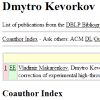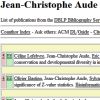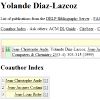Website based on  - forked on GitHub.
- forked on GitHub.
More details on the people involved in the development of the website available here.
In accordance with the European General Data Protection Regulation, you may
request information about your personal data processed on this website, or demand its correction or deletion
by contacting Philippe Gambette, the administrator of this website.
To refer to this website, please cite:
Tushar Agarwal, Philippe Gambette & David Morrison (2016),
Who is Who in Phylogenetic Networks: Articles, Authors and Programs,
https://arxiv.org/abs/1610.01674, website available at http://phylnet.univ-mlv.fr.













